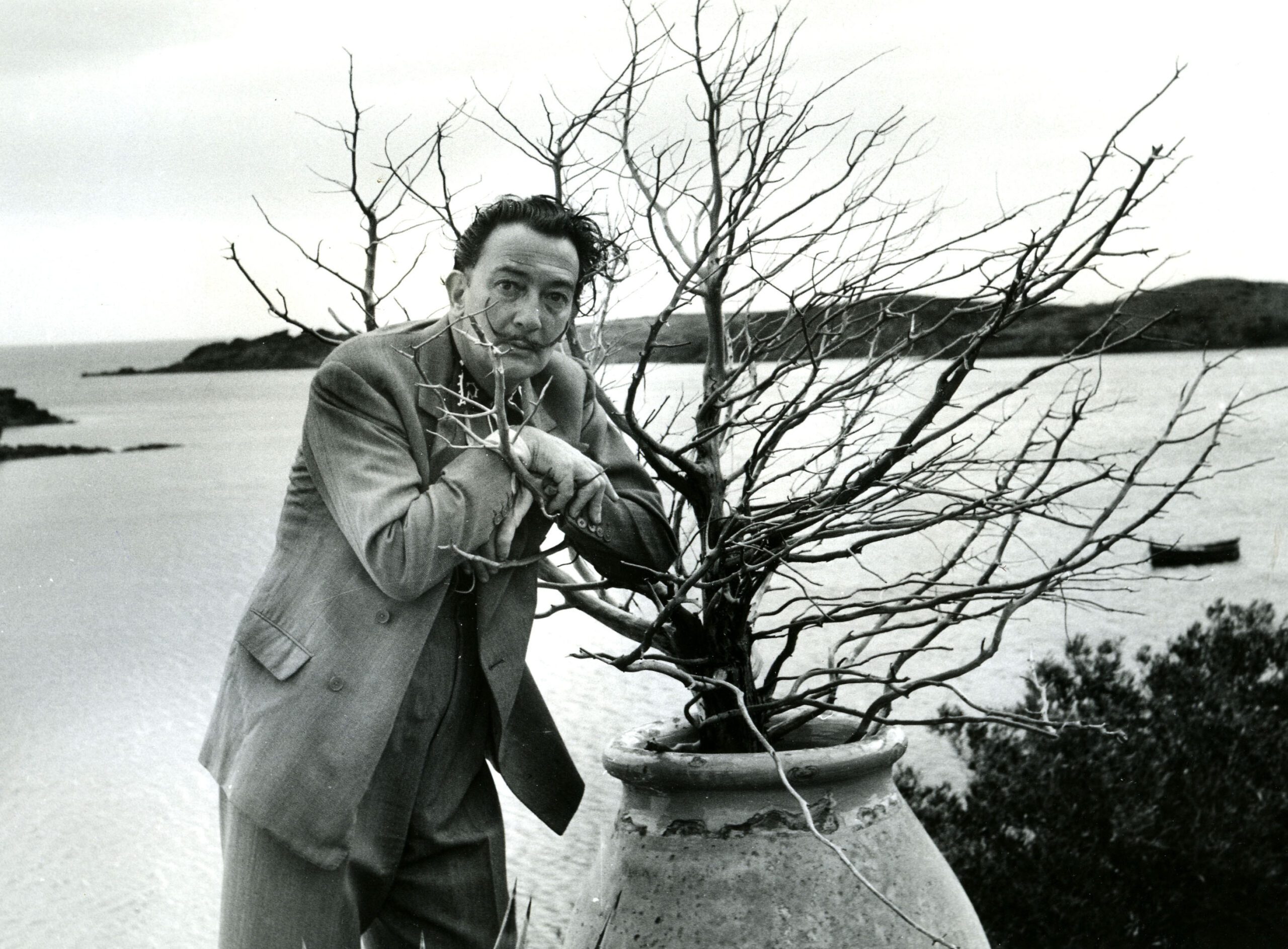
Who is Salvador Dalí?
When artist Salvador Dalí arrived on the scene, everyone was forced to pay attention, whether they liked it or not. Dalí is one of the most praised surrealist artists of the 20th century and a pioneer in unbridled self-expression. His larger-than-life persona and eccentric behaviors made him a captivating figure, which was directly represented through his abstract, absurdist artwork.
Dalí is most known for his oil paintings, where he experimented with trompe l’oeil, surreal landscapes and figures, and cubism. In his relentless commitment to the arts, he also experimented with many other mediums, including sculpture, fashion, jewelry, photography, and theater design. In 2011, Portrait de Paul Éluard sold for nearly $22 million at Sotheby’s in London, his most expensive piece sold at auction to date. However, many of his famous works in galleries are valued much higher, with Persistence of Memory reportedly valued at up to $150 million.
| Born | May 11, 1904, |
| Nationality | Catalonian, Spanish |
| Died | January 23, 1989 |
| Mediums | Painting, sculpture, photography, theater |
| Movements | Surrealism, Dada, Avant-Garde |
View this post on Instagram
About Salvador Dalí
Salvador Dalí was born in 1904 in a small town outside of Barcelona, Spain. His family was well-off and they supported Dalí’s pursuit of the arts. From a very young age, Dalí had an imaginative, rebellious spirit that often got him in trouble and once got him expelled from art school, but ultimately defined his artistic brand and persona. He studied at the Madrid School of Fine Arts and later at the Special Painting, Sculpture, and Engraving School of San Fernando.
Dalí came to the United States in the 1930s, where he studied the psychoanalytic concepts of Freud and got involved with the Dada and Cubism movements. He was inspired by artists like Giorgio de Chirico, Joan Miró, and Picasso–artists pushing conventional boundaries and exploring abstract territories. Dalí created art at a time when uncertainty and chaos were pervasive in a world at war. These themes were heavily displayed in his paintings, featuring body parts, bones, sexual images, and optical illusions. His fascination with Freud also led him to create from the subconscious in a style called “automatism,” where the artist lets intuition take control.
Salvador Dalí Artistic Style
Throughout the 40s, 50s, and 60s, Dalí experimented with all sorts of mediums and grew in popularity. He was arguably the first artist to create a brand for himself and essentially become a walking, talking version of the art he created. Stories of Dalí peeing on a Warhol piece that was gifted to him, to showing up at a party in a glass case and a brassiere were common and defined his performative, flamboyant presence. He set the stage for artists like Yoko Ono and showed that modern artists had to be exciting and socially interesting to be successful. Today, artists like Jeff Koons, Damien Hirst, and Lady Gaga have all cited Dalí as a major inspiration.
Featured Works
Lobster Telephone
1938, sculpture (steel, plaster, rubber, resin).
Lobster Telephone juxtaposes two objects that shouldn’t be together for a playful, yet jarring work of art. Dalí was constantly pushing boundaries and forcing viewers to think differently about their immediate surroundings. He also had a fascination with lobsters, as they held sexual undertones for the artist and were recurring themes in his work.
The Persistence of Memory
1931, oil on canvas.
One of the most iconic Dalí works ever created, The Persistence of Memory alters time and space in a surrealist, dream-like landscape. The melting watches resemble pieces of discarded flesh, which was Dalí’s way of flipping reality and altering their inherent properties.
Soft Construction with Boiled Beans (Premonition of Civil War)
1936, oil on canvas.
Painted just before the Spanish Civil War, Dalí captured the fear, anxiety, and horror that was to come. The looming, grotesque figure featured in the piece towers over the land in a violent struggle. The topic of “beans” in the title likely referred to the cans of beans soldiers would eat during the war.
Dalí’s Market
Most of Dalí’s famous works are secured in permanent collections at galleries like the Museum of Modern Art in New York and The Dalí in Paris. However, many of his sculptures, sketches, and smaller paintings are available to purchase at select auctions and galleries.
On average, Dalí’s work runs anywhere from $10k to $500k depending on the size, medium, and subject matter. His surrealist oil paintings and sculptures sell best, especially those containing imagery of melting clocks and watches, elephants carrying obelisks, cubist shapes, dreamscapes, horses, lobsters, and butterflies (or a combination of those).
Top Collections & Exhibitions
Dalí Theatre-Museum
Ongoing
Figueres, Spain
If you’re a Dalí enthusiast, making a trek to the Dali Theatre-Museum in his hometown of Figueres, Spain should be on your list. The museum harbors the single largest collection of Dalí’s work, including paintings, sculptures, installations, collages, jewelry, and more.
The Dalí
Ongoing
St. Petersburg, Florida
The Dalí in Florida holds more than 2,400 of Dalí’s works. The museum’s architecture is a tribute to Dalí’s wild imagination and exploration of the absurd, with an “Avant-Garden” that allows visitors to experience the relationship between math and nature, and the building itself, which is a giant glass bubble called the “enigma.”
Caesarea Ralli Museum
Ongoing
Caesarea, Israel
Not many people know about the Ralli, but it is home to an incredible collection of Dalí’s bronze sculptures and statues. This hidden gem features sculptures of melting clocks, horses, religious imagery, and more.